On the eastern end of Nice, the Colline du Chateau (Castle Hill) looms over Vieux Nice from a height of 92m. By day the park offers unforgettable views over the Baie des Anges and by night the illuminated hill cuts a striking figure against the sky. Much of the top of the hill is a vast playground and sports center. With its spacious parkland, sweeping views and evocative ruins the Colline du Chateau is a great place to visit with kids. Despite it's name, there's very little of the medieval defensive fortress that remains which is a shame considering the Chateau's importance in Nice history.

View from the top of Castle Hill
The story of the hill begins at least as far back as the Bronze Age around 2100BC, maybe further. Around the third century BC the hill became a Greek colony trading with the Greek settlement of Massalia (now Marseille). The hilltop settlement became known as Nikaia. From the time that Julius Caesar conquered the region in 49BC to the fall of the Roman empire in 476, the hill was continuously occupied although power gravitated its rival, Cemenelum on Cimiez hill. (See more about the history of Nice)
Only nominally under Roman control, the settlement retained strong cultural and commercial links to Greek Massalia. As the ruins of the Cathedral date back to the 5th century, it's clear that the inhabitants were early converts to Christianity. By the 11th century the settlement expanded to include churches, convents, a market and towers. A second Cathedral was built as well as the first walls to protect the new town. Documents refer to the hill as a "castrum" or "fortified place" in Latin.
As the town grew and prospered the population spilled down the western slopes of the hill. A new and larger wall that encompassed the eastern part of Vieux Nice was built to protect them. The seat of power was the Chateau at the highest point of the hill. As the administrative center, the Chateau included the town hall and the residence of the governor.
In 1388 Nice became part of the House of Savoy. By that time the town was an important trading post, especially for salt, which prompted the Dukes of Savoy to protect their possession with more walls. In 1436 they increased security by building towers. There were four towers including Saint Elmo tower, rebuilt as the Tour Bellanda. In the early 16th century new defensive structures arose which included north walls, gates, semi-circular bastions and a well to bring water from below.
After a Franco-Turk naval force besieged Nice in 1543 (see more about the history of Nice), Savoy Duke Emmanuel Philibert decided to turn the whole upper section into a citadel. All civilians moved down to the Old Town and Savoy engineers got to work building more and better fortifications.
Throughout the entire 16th and 17th centuries additional bastions and defensive structures were built. Nevertheless the French army laid siege in 1691 and once again in 1705. The city capitulated in 1705 and in 1706, the fortress crumbled under relentless artillery fire. Soon after, King Louis XIV razed the entire fortified structure.
During the rest of the 18th century the Princes of Savoy used the hill for military drills and storage. There was a little grazing and a little farming but not enough to stop the occasional landslide that buried the houses below. Barracks and military buildings dotted the landscape until 1934. In 1822 the King of Sardinia transformed the hill into a public garden. Botanists replanted the terrain with Aleppo pines, cypresses, oaks and various hardwood trees.
As Nice was beginning to flourish as a winter holiday spot for the European aristocracy, the timing was good. Visitors came to stroll the shady paths and enjoy the spectacular views over the Baie des Anges. Installation of the waterfall in 1885 encouraged the growth of more vegetation and more visitors.
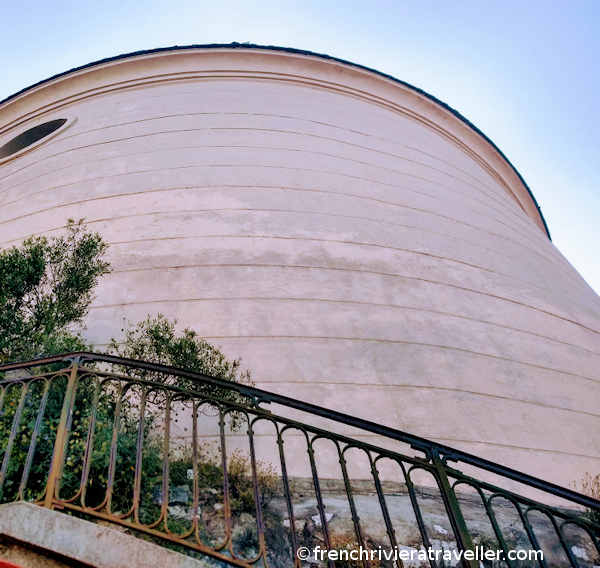
Bellanda Tower is the circular tower that punctuates the end of the Promenade des Anglais. It occupies the site of the former Saint Elmo tower which formed part of the lower defensive walls of the citadel. Saint Elmo was the patron saint of sailors. Built in 1436 to protect the Chateau's western flank, the Saint Elmo tower was destroyed by Louis XIV in 1706 and lay in ruins for over a century.
Around the middle of the 19th century Honore Clerissi bought the site and built the current tower as part of his hotel below, now the Hotel Suisse. He suspected that the panoramic view of the Baie des Anges would attract the celebrated foreigners flocking to Nice for their health. He was right. Among the most famous residents of the "Clerissi Tower" was the composer Hector Berlioz who came several times and composed Le Roi Lear and Le Corsair during his stays.
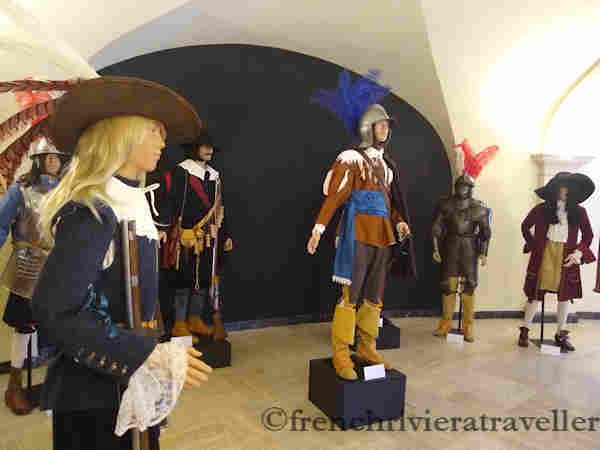
Near the top of Bellanda Tower is the Bellandarium, a small, free museum with dioramas and explanations of Castle Hill's history. (open Saturday 10am-1pm and 2-6pm).
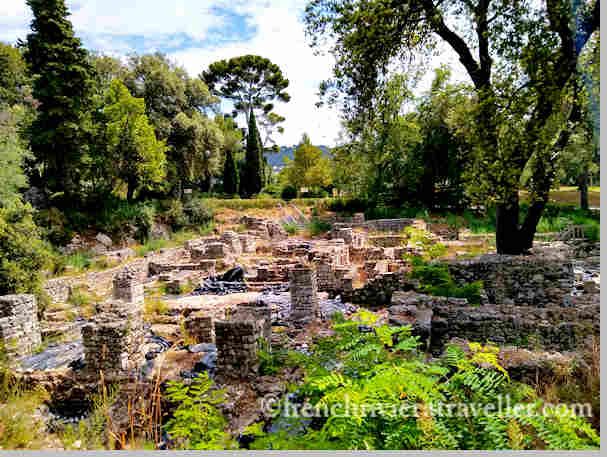
Saint Mary's Cathedral (Cathedrale Sainte Marie), is the hill's most significant archaeological site. The first sacred structure here dates back to the 5th century. Little is known about it except that it was a 22m by 10m rectangle. During the 8th and 9th century an apse was constructed but it was not until the 11th century that a recognizable church emerged with two apses and columns arranged in the style of a typical medieval church. In the beginning of the 12th century, the clergy arrived along with a nave and choir. In the 15th century the church was enlarged on the eastern side and became Cathedrale Sainte Marie (Saint Mary's Cathedral). The church lasted until its destruction in 1706.
Around a large holm oak tree are remains of the side chapels. Go up to the platform where signs on the right offer a visual reconstitution of the church as it originally appeared. Notice the remains of two large pillars in the church nave. Two column bases delineate the choir. They belong either to the 11th-century church or to the second medieval cathedral. Two semi-circular apses and a chancel screen are still visible. Low walls around the pillars are vestiges of the 5th century church. Archaeologists are still excavating the ruins of another old church dedicated to Saint John the Baptist and a clerical cemetery nearby.

The Cascade is a lush and refreshing oasis built under the shadow of an old fortified tower. In the late 19th-century the Chateau was undergoing a transformation into a recreational area. What better place to commemorate the new water system that brought water from the Vesubie valley, about 50km north of Nice, to the Cascade and the city of Nice? The Cascade was inaugurated 27 June 1885.
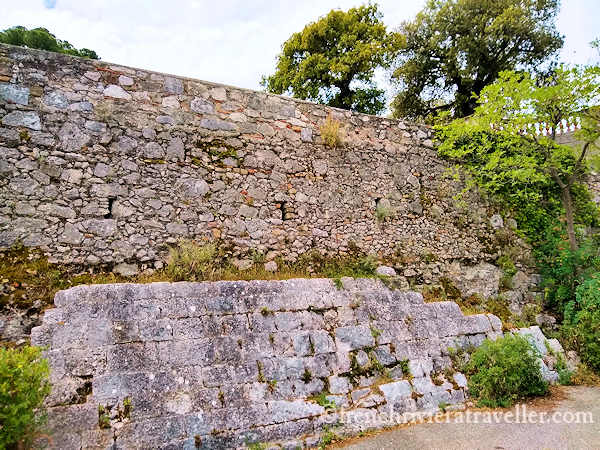
At the top of the hill are the walls of the original Chateau, built sometime between the 13th and 14th century. At one time it was protected by a double wall and a tower that has since disappeared. A sign indicates the spot where a cannon ball left its mark. At the top of the walls is Le Point de Vue a casual restaurant for light refreshments (cash only). Go up the stairs on the left of the restaurant to the Heart of the Chateau. Notice that this is the highest point and offers a panoramic view. Whoever was governing at the time had this view from his apartments. Centuries later, in 1860, Napoleon III came to visit and exclaimed 'It's the most beautiful landscape in the world!" It was from this spot that Nice's midday cannon was once fired.
The two cemeteries on the Colline du Chateau--Christian and Jewish--are undoubtedly the most beautiful burial grounds in Nice. Up until the late 18th century Nice's dead were buried either in Vieux Nice or, if they had the money, in one of Nice's churches. In 1783 King Victor Amadee III decreed that, for hygienic reasons, church burials were forbidden; henceforth all burials were to be outside the city center. As the Colline du Chateau was little more than a vast, empty area it seemed the natural place for a cemetery. Plus, there were a lot of stones lying around from the 16th-century citadel which were used to create the cemetery walls. The Christian cemetery opened in 1783 and the Jewish cemetery, which had been on rue Sincaire in the Old Town, was moved just south of the Christian cemetery shortly thereafter.
Jewish Cemetery
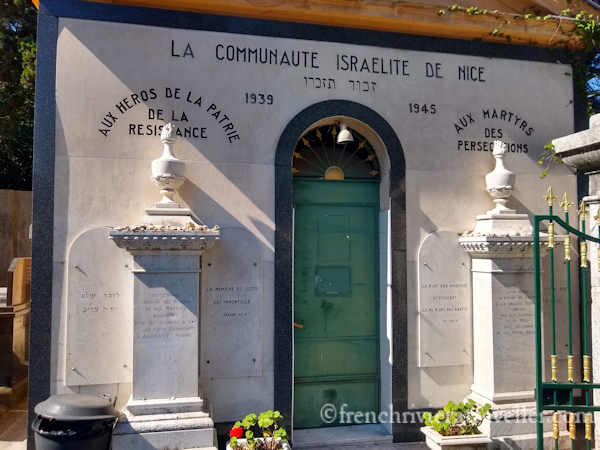
To the left of the entrance is a wall inscribed with the names of 3602 men, women and children deported from Nice to the Nazi death camps. Jews from the entire region and Monaco were rounded up and held in Nice. The deportations began slowly in 1942, paused between November 1942 and September 1943 under the Italian occupation and recommenced with vigor under the German occupation. Between September 1943 and August 1944 over 3000 Jews were either deported or shot on the spot.
Enter the cemetery and on your right is a commemorative wall erected by the Jewish community in Nice. The left side commemorates the heroes of the resistance with an urn containing ashes of those who perished in the Auschwitz death camp. On the right a panel commemorates the martyrs of persecutions with an urn containing human grease that the Nazis fabricated from the dead.
Christian Cemetery

The Christian cemetery is a testament to the remarkable cultural, historical and artistic diversity of Nice and one of Europe's great monumental cemeteries. There are 2250 Catholic, Protestant and Orthodox tombs in an exuberant mixture of artistic styles. The oldest tombs date from the first half of the 19th century and exhibit a neoclassical style. Most of the tomb art goes farther afield displaying busts, medallions and statues of the deceased, symbolic motifs such as crosses, angels, anchors and flowers, lots of crying maidens and the occasional horror movie tableau.
There are tombs of all social groups from the unknowns of Vieux Nice to political and artistic notables to the Russians, Poles, Germans, English and Americans who flocked to Nice at the turn of the 20th century. There's a map at the entrance as well as QR code activated explanations (in French). The caretaker's office across from the entrance is another helpful source of information.
You can access the chateau by elevator or stairs from the eastern end of the Old Town.